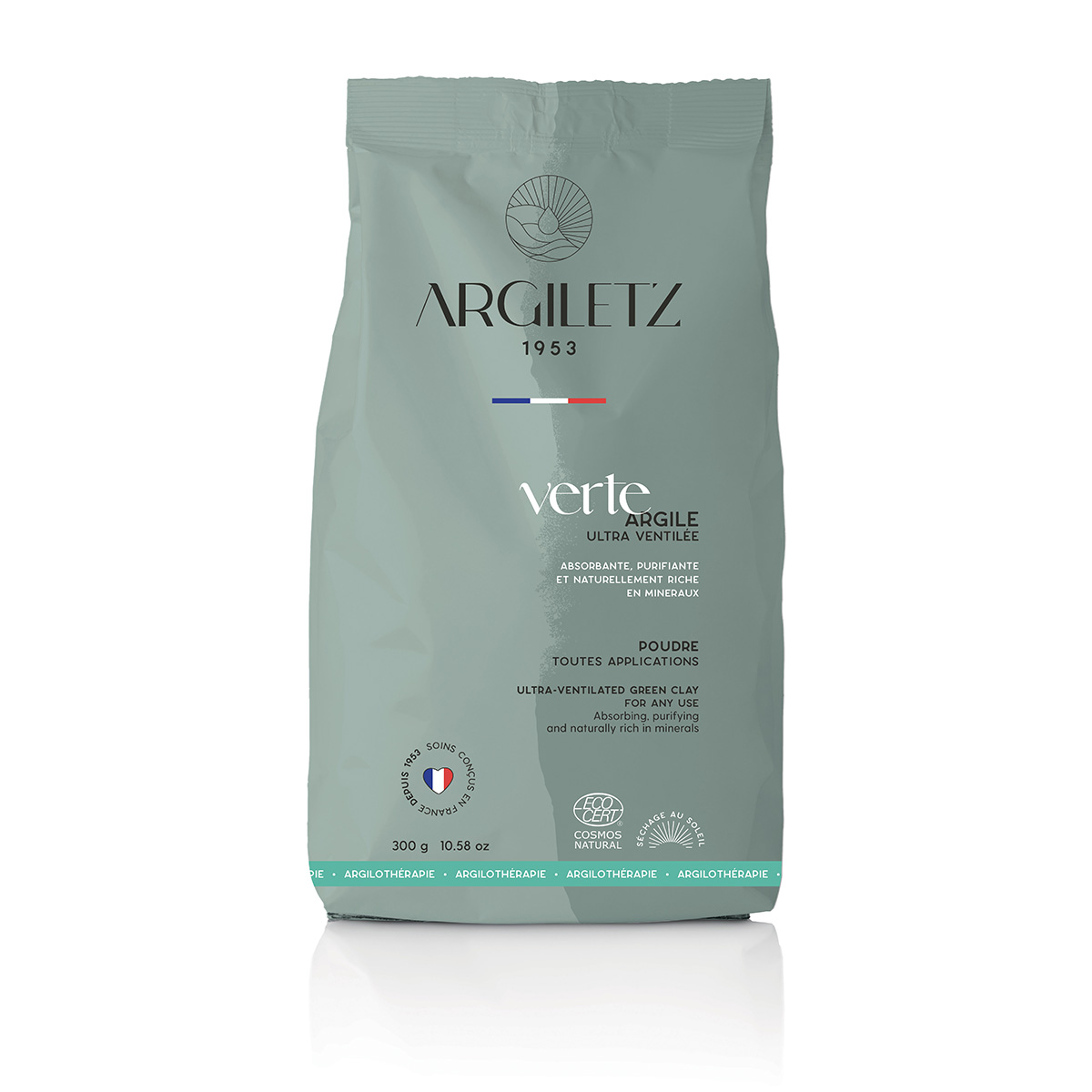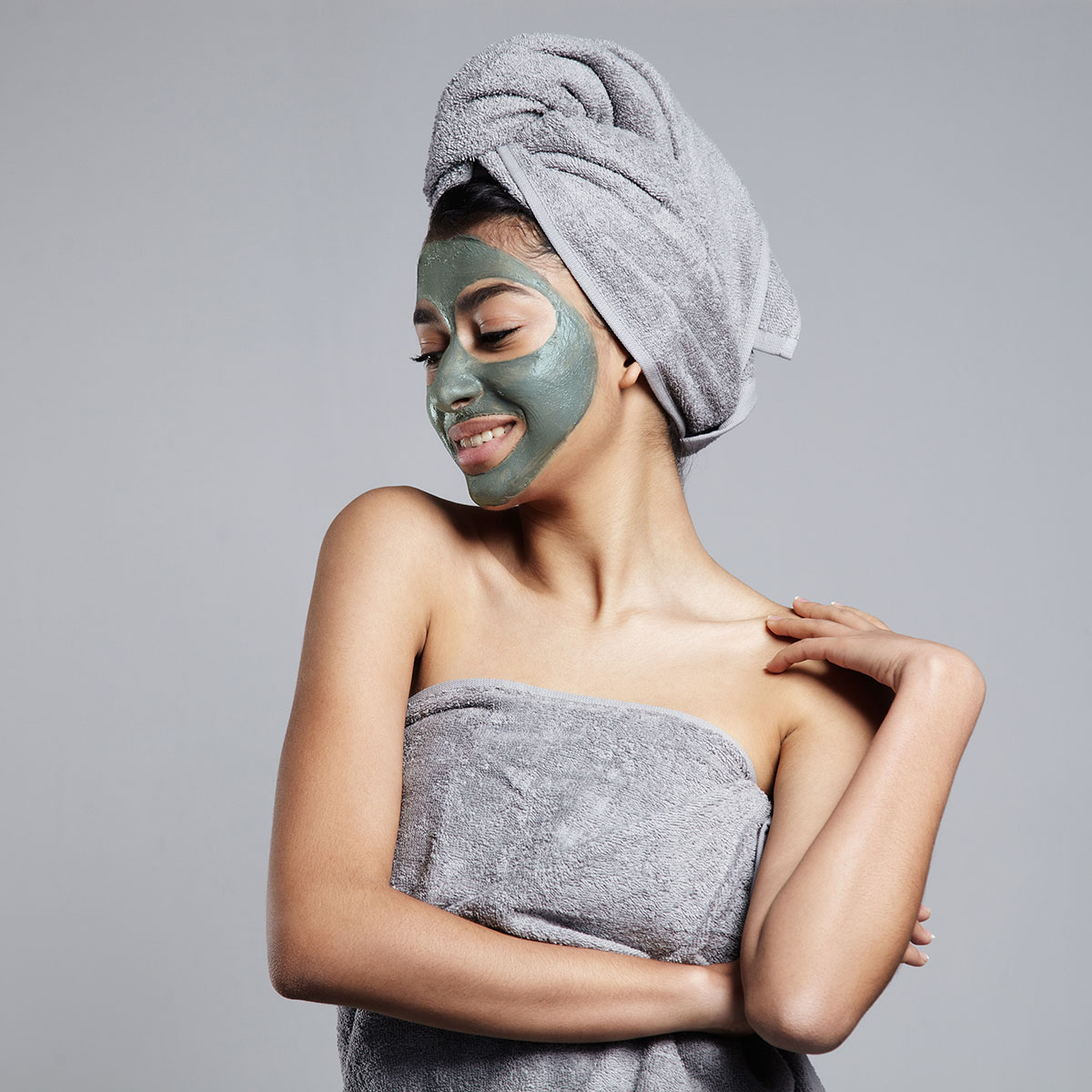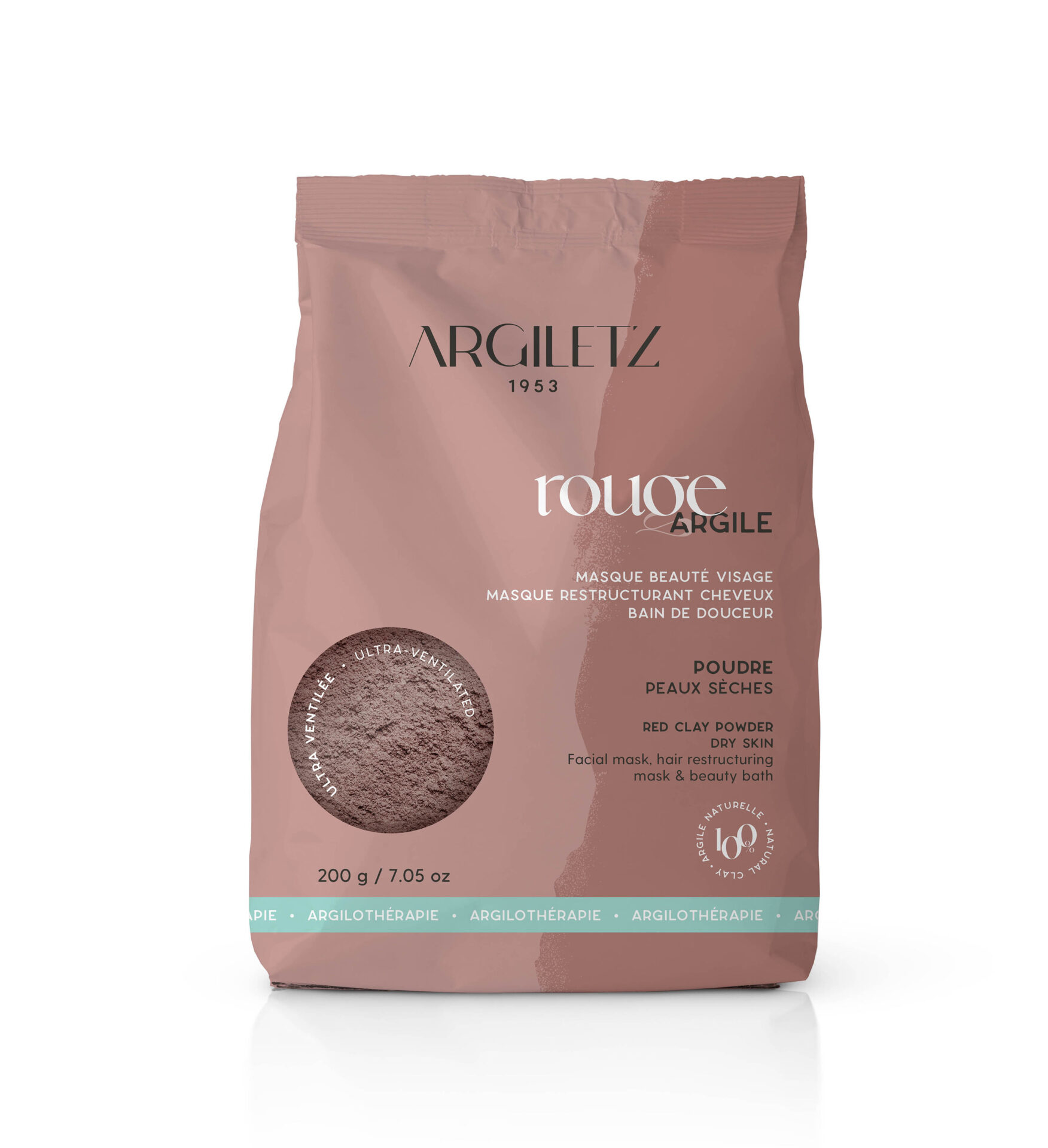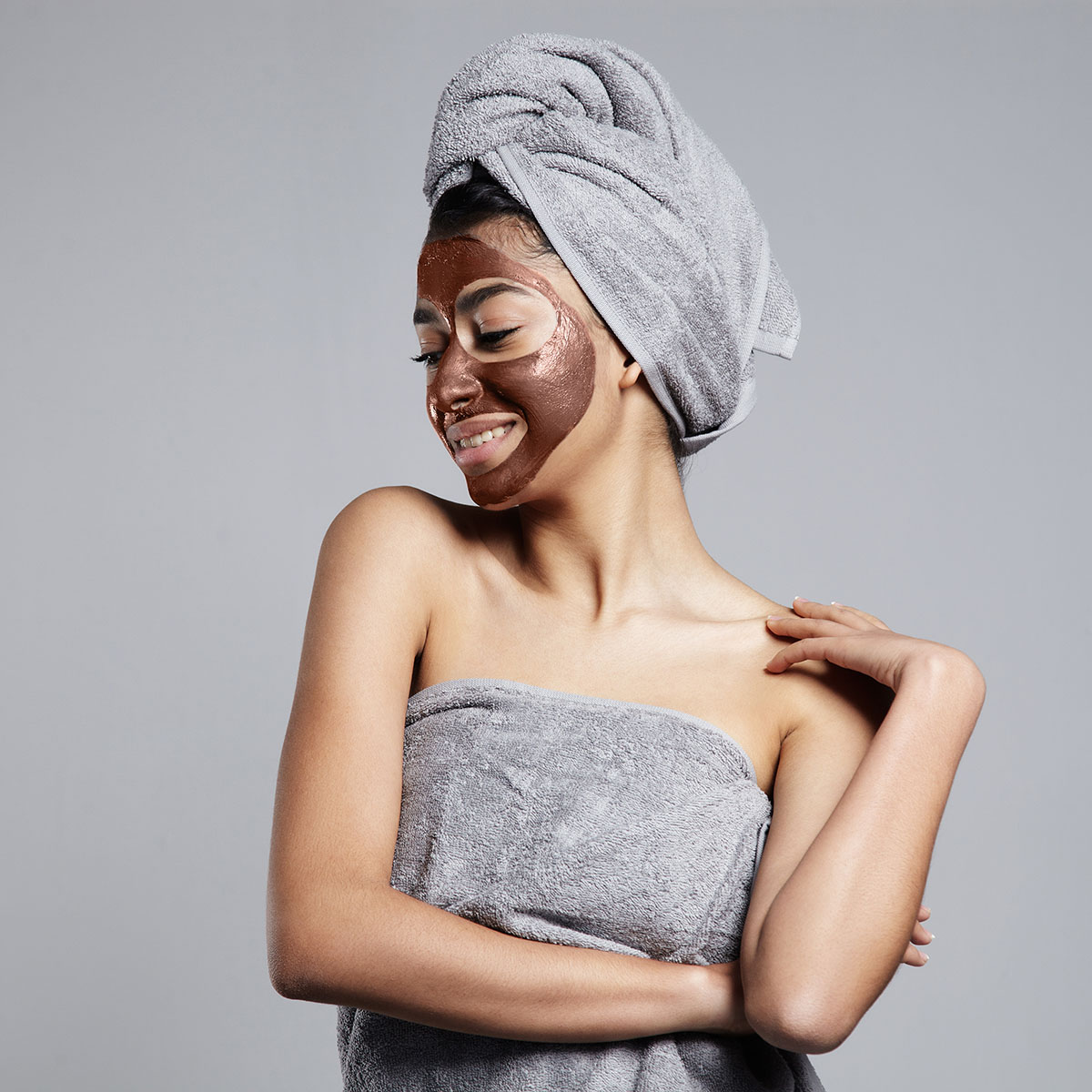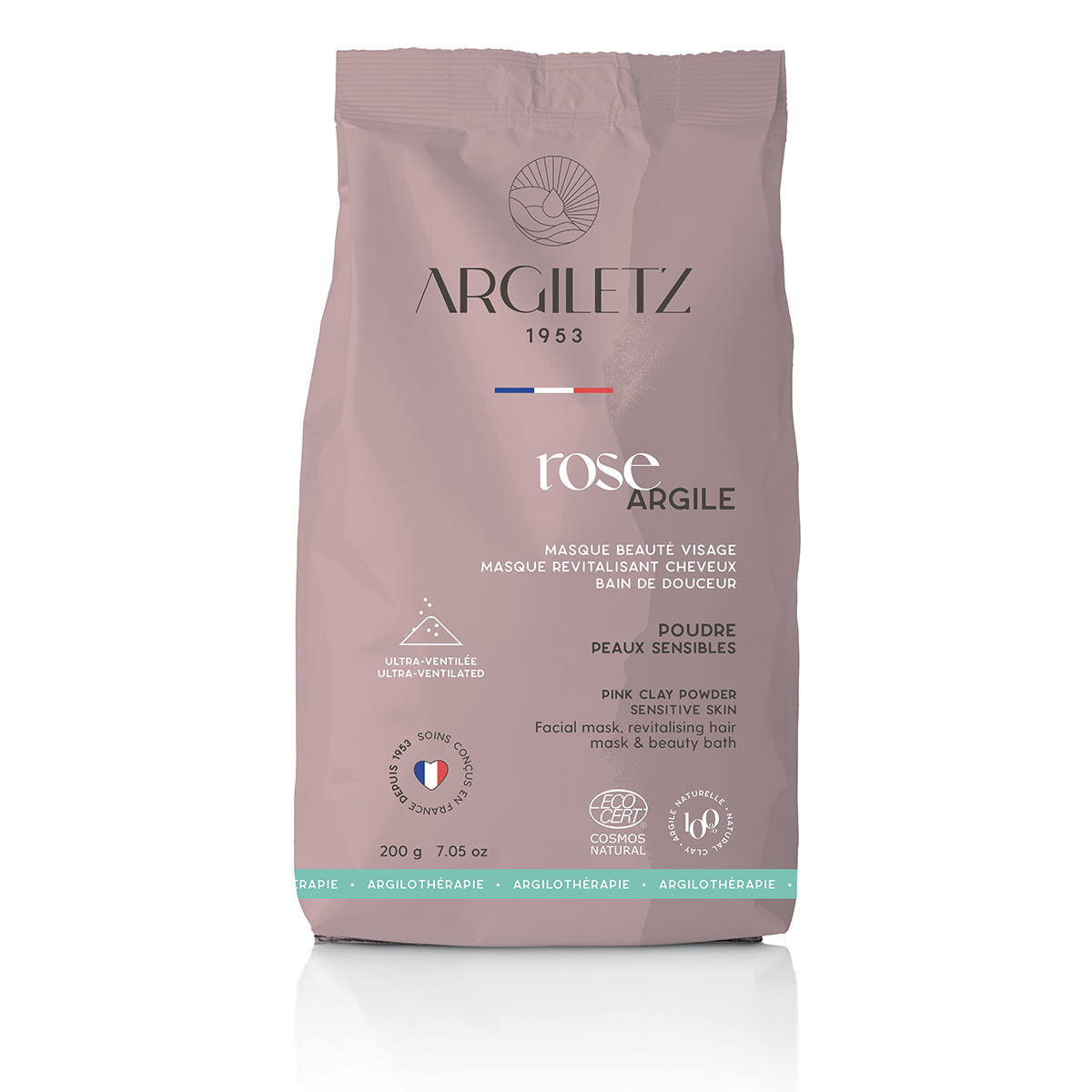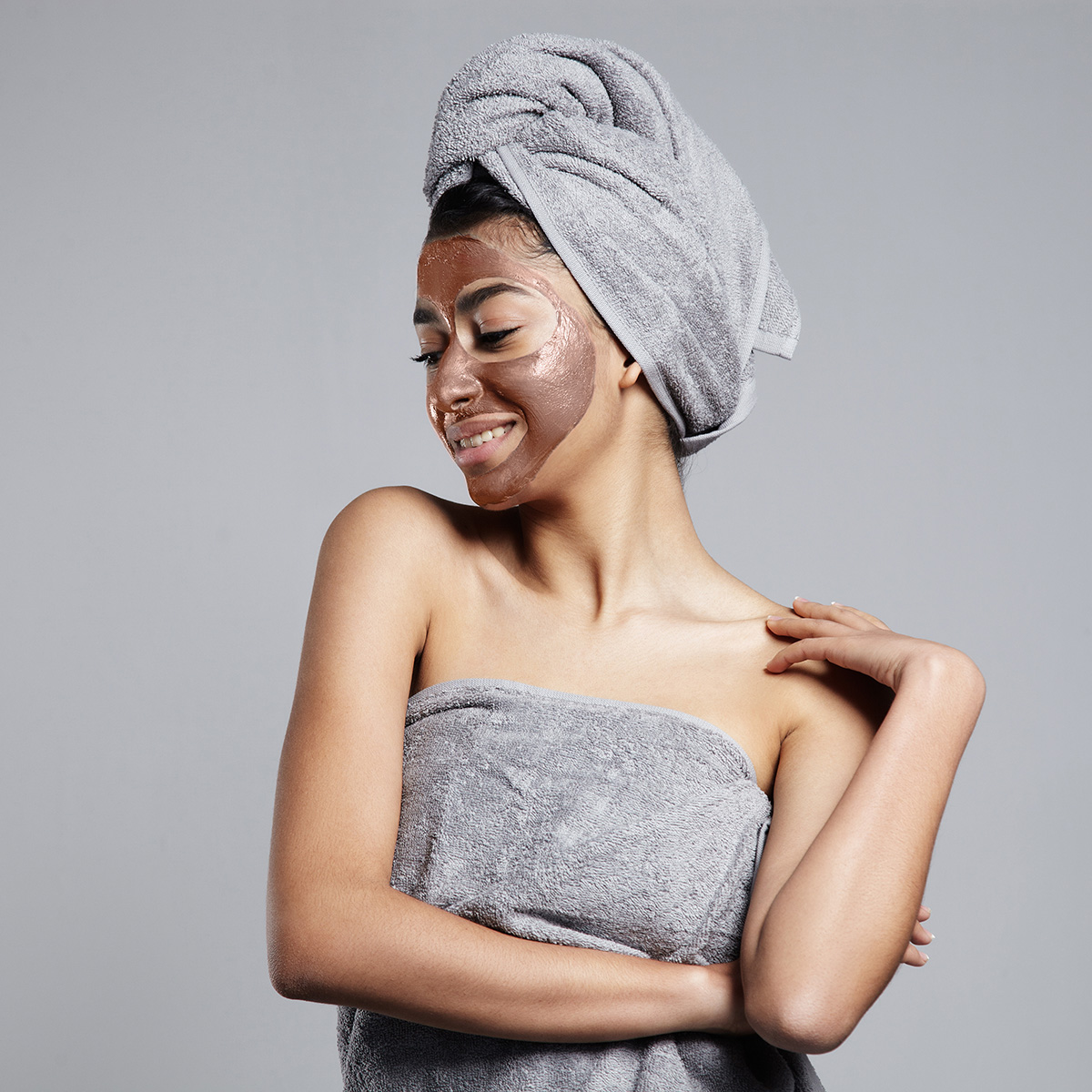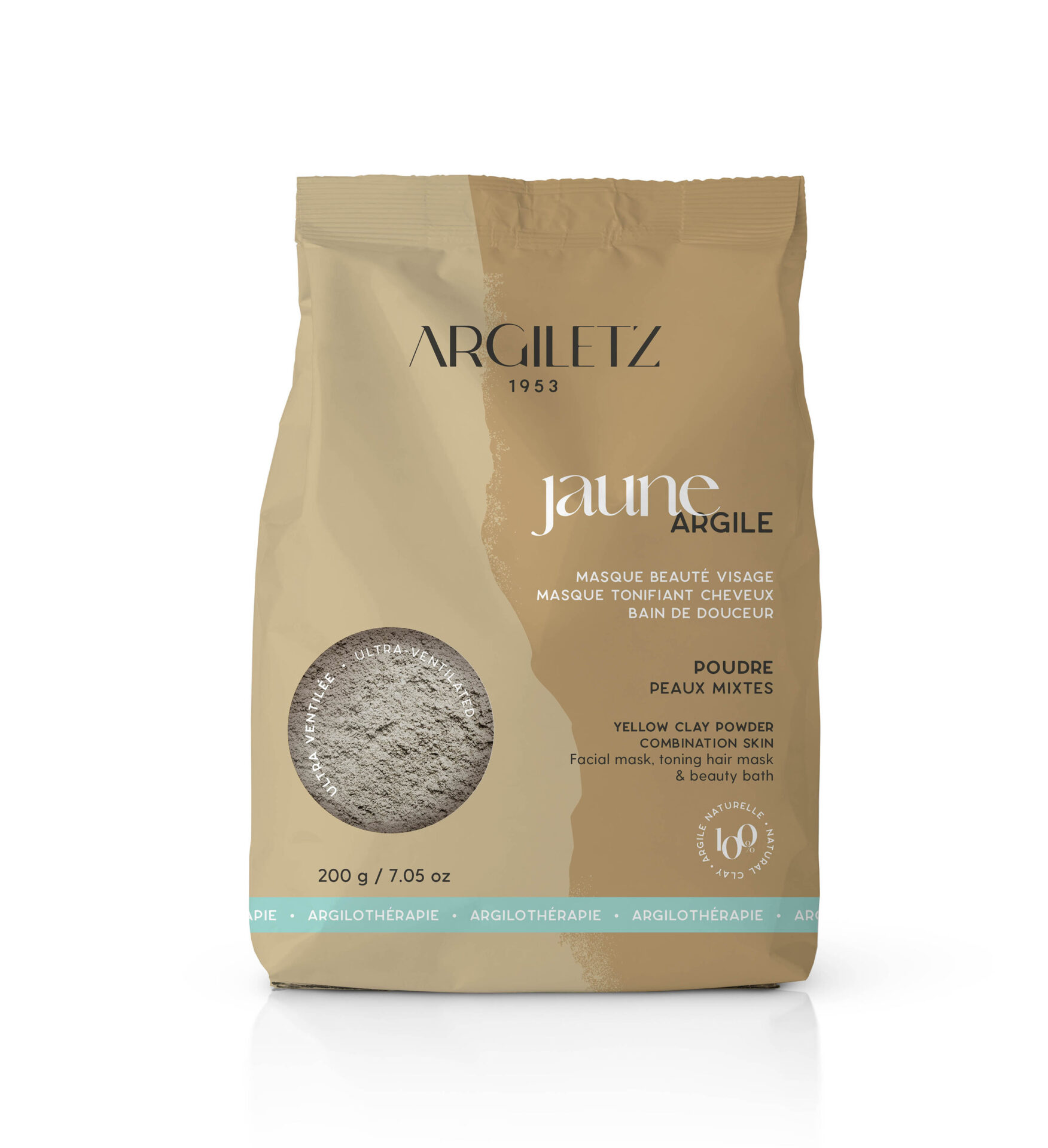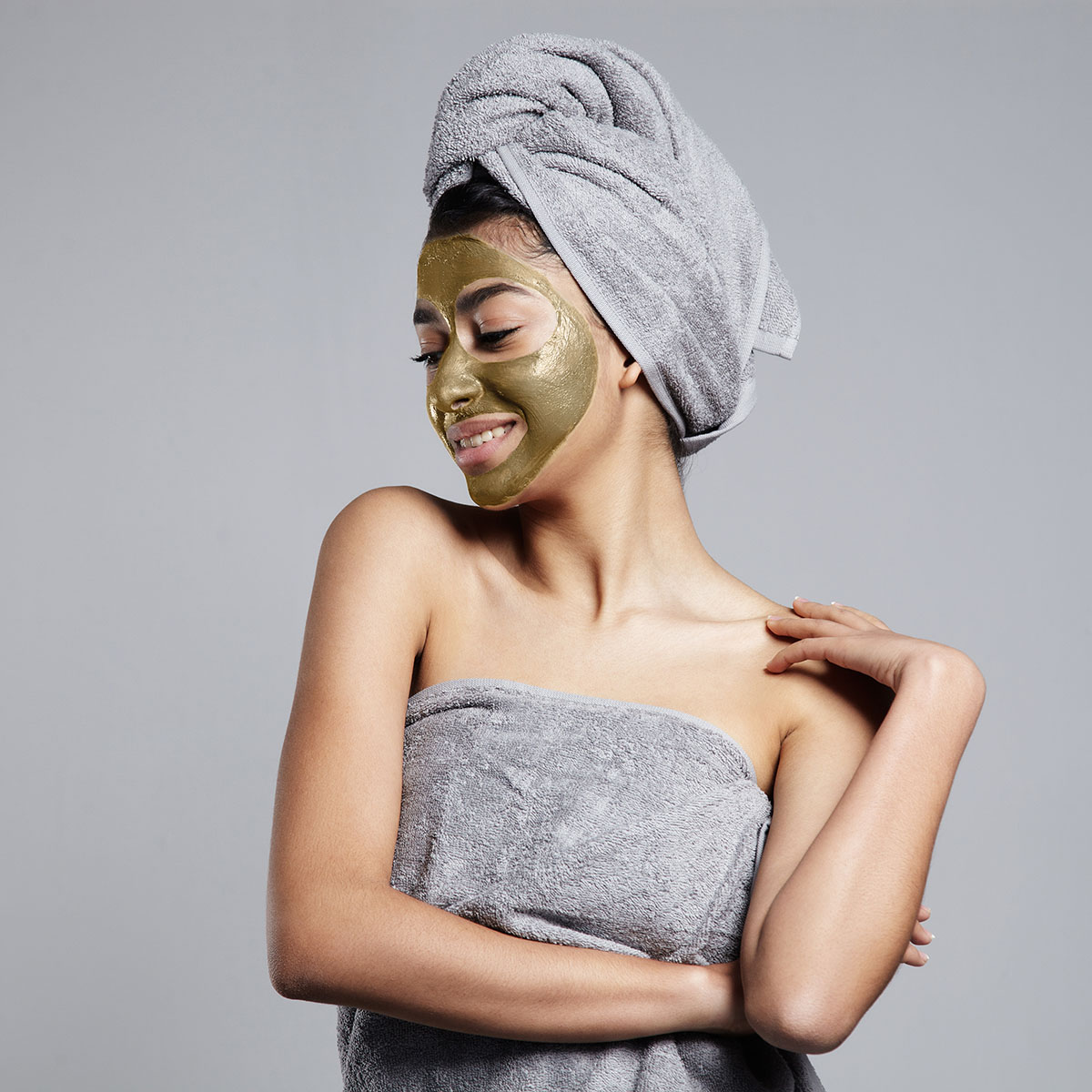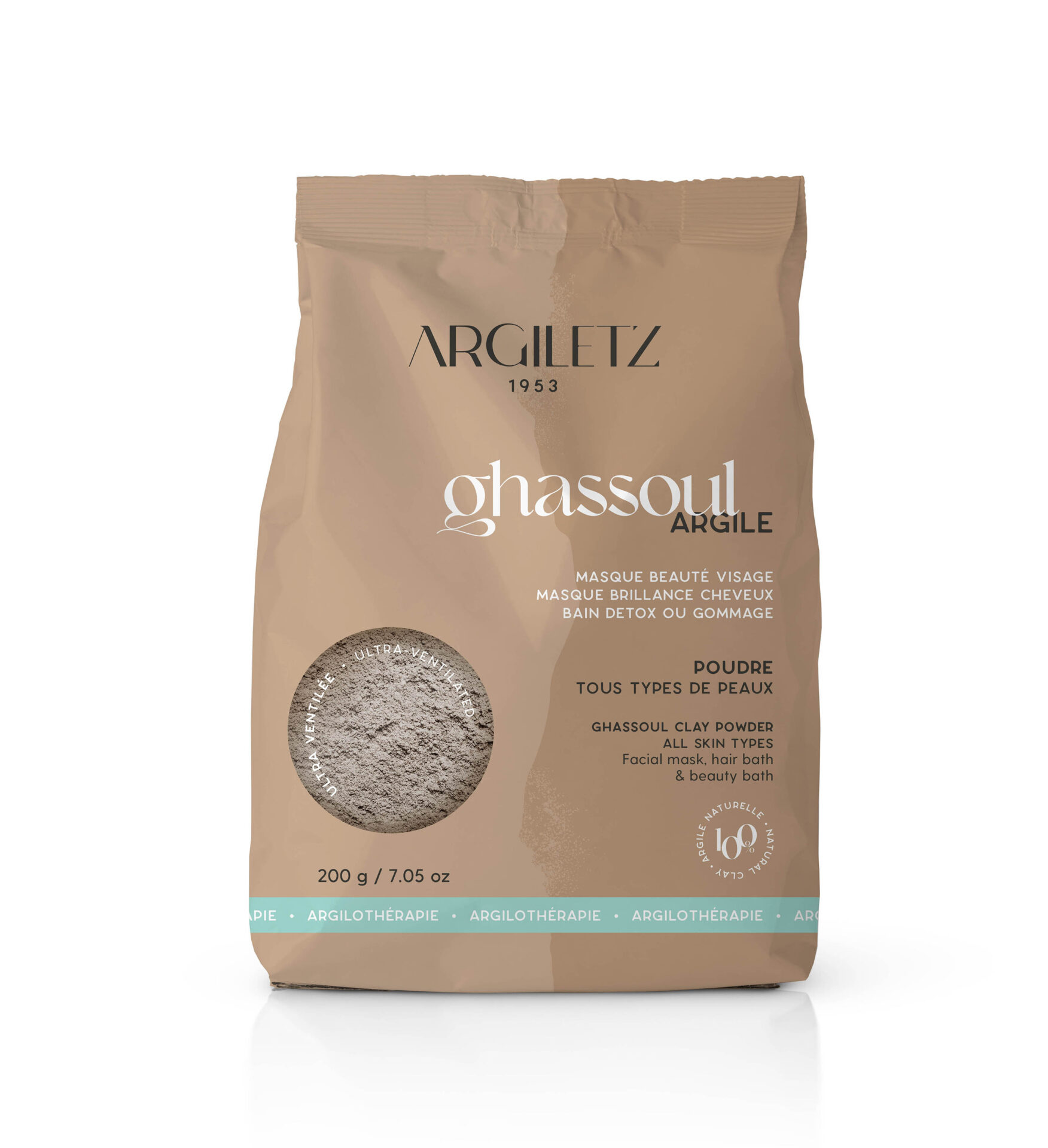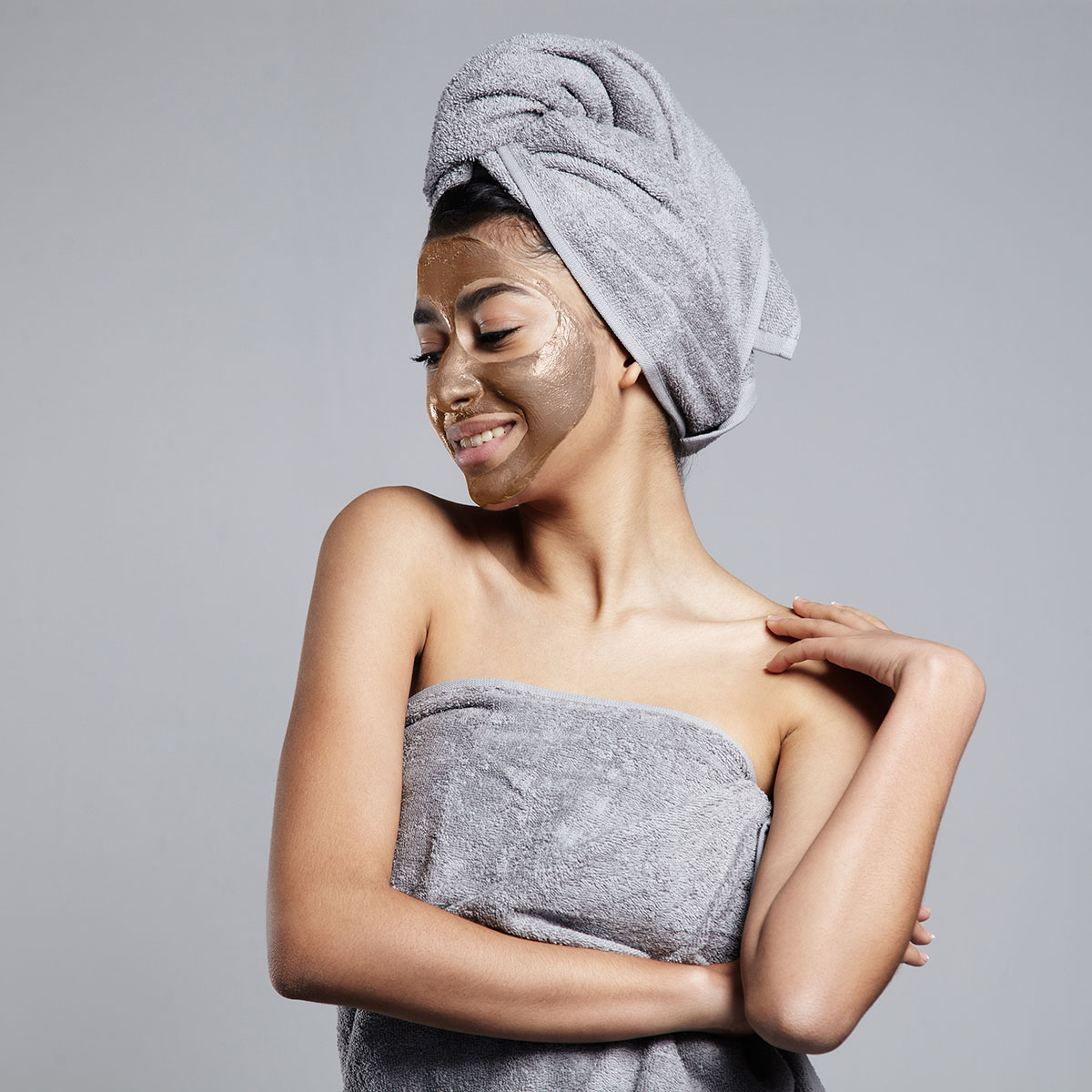L’argile est une matière naturelle appréciée pour ses nombreux bienfaits depuis la nuit des temps. Grâce à sa composition riche en minéraux et en oligo-éléments, ses utilisations sont multiples, à la fois pour le visage, le corps, les cheveux, mais aussi pour l’entretien de la maison et le soin aux animaux. Aujourd’hui, déclinée sous différentes formes telle que la pâte prête à l’emploi ou bien en tant que composant de produits cosmétiques brevetés, mais également dans des produits pour l’argilothérapie, l’argile en poudre est de loin la forme la plus utilisée à travers le monde. Pourtant, afin de bénéficier pleinement de ses vertus, il est indispensable de savoir comment l’utiliser et de connaître les erreurs à éviter.
CHOISIR LA GRANULOMETRIE DE L’ARGILE EN FONCTION DE SON UTILISATION
L’argile est une matière brute, issue de la Terre, dont la forme est très hétérogène. Une fois extraite et travaillée, elle est proposée sous différentes granulométries en fonction de ses différents usages. Qu’est-ce que la granulométrie ? Il s’agit de la taille des grains d’argile, qui peuvent varier en grains ou morceaux grossiers de 2cm à de très (très) petits grains (poudre) de 20 microns. Voici un petit récap’ de nos différentes granulométries et de leur utilisation.
- Masques visage et cheveux
Pour chouchouter votre peau et retrouver une chevelure douce & soyeuse, l’argile est un soin de choix qui ne cessera de vous surprendre. Que vous soyez une fervente adepte des soins zéro déchet ou simplement en quête d’un soin qui soit à la fois naturel et efficace, nous avons une bonne nouvelle : réaliser votre masque à l’argile n’a jamais été aussi facile !
Pour cela, nous vous conseillons d’utiliser nos argiles ultra-ventilées. Sous forme de grains d’environ 20 microns, l’argile ultra-ventilée prend une forme de poudre velouté et légère. Grace à la finesse de son grain, cette argile est idéale pour la préparation de masques d’argile (visage et cheveux) ou pour une utilisation dans l’eau du bain car elle fond instantanément. Avec elle, exit les grumeaux et bonjour à la pâte lisse et homogène.
L’argile surfine a également une granulométrie intéressante. La finesse de ses grains – 60 microns, lui permet de fondre très rapidement au contact de l’eau ou de tout autre diluant. Il vous suffira de remuer la pâte quelques secondes afin d’obtenir un soin onctueux à souhait.
- Cataplasmes et emplâtres
S’il existe différentes couleurs d’argile, l’argile verte en poudre est de loin la plus utilisée (et la plus efficace !) lorsqu’il s’agit d’une utilisation en cataplasme ou en emplâtre. Dans ce cas de figure, il est important de bien définir la zone sur laquelle on souhaite appliquer un cataplasme et la fréquence d’application. En fonction de ces éléments, et afin que le soin soit le + économique possible tout en restant le plus pratique possible à préparer, vous pourrez vous tourner vers les granulométries ci-dessous :
- Argile moulue fine (entre 0.05 et 0.5 mm) : L’argile est sous forme de poudre brute assez grossière. Elle fond instantanément et permet l’obtention d’une pâte lisse sans difficultés.
- Argile granulée (0.5 mm) : sous forme de grains d’environ 8 mm, l’argile granulée fond en 30 minutes et nécessite donc un temps de préparation.
Argile concassée (2 cm) : l’argile est brute, sous forme de morceaux irréguliers. Il faut compter 2h pour qu’elle fonde de manière homogène. Nous conseillons de préparer la pâte la veille, ou le matin pour le soir, afin que la pâte soit la plus homogène possible. Il s’agit du format le plus économique mais qui nécessite un temps de préparation supérieur.
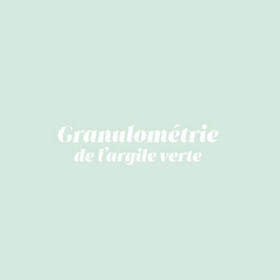
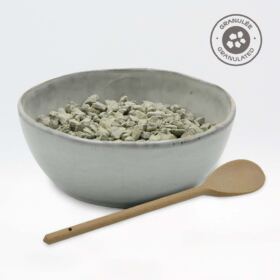
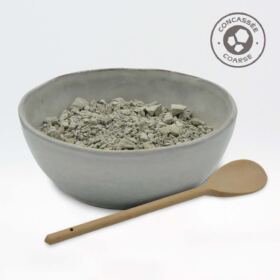
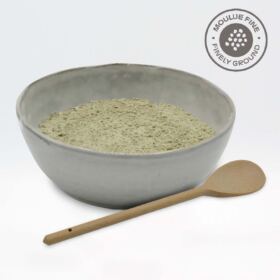
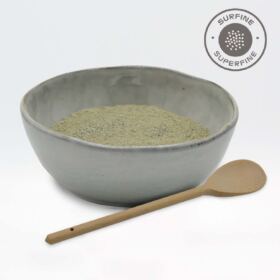
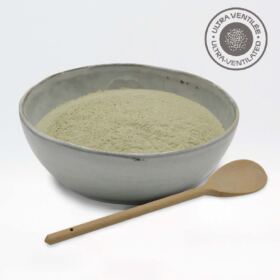
AVEC QUOI PEUT-ON ASSOCIER L’ARGILE EN POUDRE ?
L’un des nombreux avantages de l’argile en poudre est qu’elle peut être associée à d’autres ingrédients (naturels et biologiques de préférence), pour un soin complet et ciblé. Il existe d’ailleurs mille et une possibilités ! Parmi ces ingrédients, cela peut être des poudres, des fruits, des légumes, toutes sortes d’ingrédients alimentaires (miel, maïzena, yaourt…) et même des liquides comme des huiles végétales, des huiles essentielles ou des hydrolats.
[title text=”Les recettes DIY avec l’argile en poudre”]
Il existe une multitude de recettes maison vous permettant de réaliser un masque à base d’argile selon les besoins de votre peau ou de vos cheveux à un instant T.
Ajoutez de l’huile végétale telle que de l’huile d’amande douce ou de rose musquée et vous aurez un combo nourrissant et hydratant 100% naturel. En bonus, cette astuce vous permettra de conserver votre masque humide plus longtemps.
Certains ajoutent même des huiles essentielles à leur poudre d’argile, mais attention, l’argile à un pouvoir occultant et peut donc maintenir l’huile essentielle comme « sous cloche » sur la peau et ce qui peut provoquer des brulures. Faites attention lorsque vous vous lancez dans une association argile + huile essentielle, et choisissez une huile essentielle non dermocaustique (qui ne contiennent pas de phénols : des molécules irritantes.). Une autre option pour profiter à la fois de vos huiles essentielles préférées et de votre argile verte fétiche est de procéder en deux étapes :
- Réalisez votre cataplasme à l’argile verte (sans huile essentielle dans la préparation) ; laissez-en place 1 à 2 heures puis rincer et sécher.
- Appliquer dans un second temps l’huile essentielle de votre choix diluée dans une huile végétale (voir la posologie sur le flacon) en modelage.
Prenez toujours l’attache d’un professionnel de santé avant utilisation des huiles essentielles.
Les diluants”]
L’argile de poudre peut être utilisée pour divers soins cosmétiques et d’hygiène corporelle. A la place de l’eau minérale, vous pouvez l’associer avec un hydrolat (de l’eau de rose par exemple) pour une action en synergie.
BIEN CHOISIR SA COULEUR D’ARGILE EN POUDRE
Il existe différentes couleurs d’argile, chacune d’elle possède des propriétés qui lui sont propres. Pour en apprécier tous les bienfaits, il est donc primordial de choisir la couleur d’argile en fonction de votre type de peau.
- L’argile verte est la plus connue de toutes, elle s’applique sur tous les types de peaux et est appréciée des peaux grasses sur lesquelles elle aura un fort pouvoir d’absorption et permettra de réguler l’excès de sébum.
- L’argile jaune, aux pouvoirs exfoliants, s’adresse aux peaux mixtes.
- L’argile rouge est idéale pour les peaux sèches, qu’elle va adoucir et illuminer.
- L’argile blanche – aussi appelée kaolin, est la plus douce des argiles. Elle s’adresse aux peaux ternes qu’elle viendra éclaircir et sublimer.
- L’argile rose est un subtil mélange d’argile rouge et d’argile blanche, parfaite pour les peaux sensibles et réactives qui ont besoin d’être apaisées et nettoyées en douceur.
- Moins connue, il existe également l’argile Ghassoul qui s’adresse à tous les types de peau et permet un nettoyage en profondeur de la peau.
-



Argile verte en poudre ultra ventilée – Certifiée COSMOS NATURAL**
Sachet 300gAbsorbante et purifiante | Toutes applications
6,30€Ajouter au panier52 avis -



Argile rouge en poudre ultra ventilée
Sachet 200gBain | Masque visage & cheveux | Peaux sèches
7,10€Ajouter au panier19 avis -



Argile rose en poudre ultra ventilée – Certifiée COSMOS NATURAL**
Sachet 200gBain | Masque visage & cheveux | Peaux sensibles
7,10€Ajouter au panier13 avis -



Argile jaune en poudre ultra ventilée
Sachet 200gBain | Masque visage & cheveux | Peaux mixtes
7,10€Ajouter au panier11 avis -



Argile ghassoul en poudre ultra ventilée
Sachet 200gBain | Masque visage & cheveux | Toutes peaux
9,35€Ajouter au panier7 avis
NE PAS UTILISER D’USTENSILES OU CONTENANTS EN METAL
Parmi les erreurs à ne pas commettre lorsqu’on souhaite utiliser de l’argile en poudre, il y en a une PRIMORDIALE : évitez tout ustensile ou contenant en métal ou en plastique lorsque vous manipulez cette terre de bienfaits.
Pourquoi ? Car l’argile est une terre de vie, elle réagit lorsqu’elle entre en contact avec du métal ou du plastique. Ces deux matériaux peuvent altérer les propriétés de l’argile et donc limiter son action sur votre peau et/ou vos cheveux.
Si vous souhaitez profiter des vertus de l’argile en poudre et réaliser votre propre pâte d’argile, nous vous conseillons d’utiliser une cuillère en bois ainsi qu’un bol en bois, en grès ou en verre.
Vous l’aurez compris, l’argile en poudre vous offre une multitude de possibilité, elle vous permet un soin facile, efficace et économique, que vous pourrez réaliser sur le pouce. En manque d’inspiration ? Retrouvez toutes nos recettes de masques à l’argile !
NE PAS LAISSER L’ARGILE SECHER
Lors de la pause d’un masque, d’un emplâtre ou d’un cataplasme à l’argile, il est impératif de garder l’argile humide durant toute la durée. Les ions actifs de l’argile se réveillent au contact de l’eau et c’est ainsi qu’ils vous transmettent tous leurs bienfaits. Lorsque l’argile sèche sur votre peau, elle perd une de ses capacités les plus importantes : celle de relâcher ses minéraux et oligo éléments. Toutefois, elle continue d’absorber, et cela peut entrainer au bout d’un certain temps un dessèchement de l’épiderme. Alors pour bien faire, pensez à réhumidifier régulièrement ou à retirer l’argile dès que les tiraillements se font ressentir !
Nota : Toutes les recettes, applications, mélanges et conseils sont tirés de recettes populaires, revues et ouvrages spécialisés. Argiletz n’engagera pas sa responsabilité dans l’usage que vous ferez de ces informations ou de nos produits. Argiletz ne saurait se substituer aux professionnels de santé. Nous vous recommandons de systématiquement consulter un médecin, pharmacien ou tout autre professionnel de santé avant tout usage, qu’il soit prolongé ou à usage thérapeutique des huiles essentielles et autres extraits de plantes. De même si vous présentez des symptômes ou pathologies connues.
